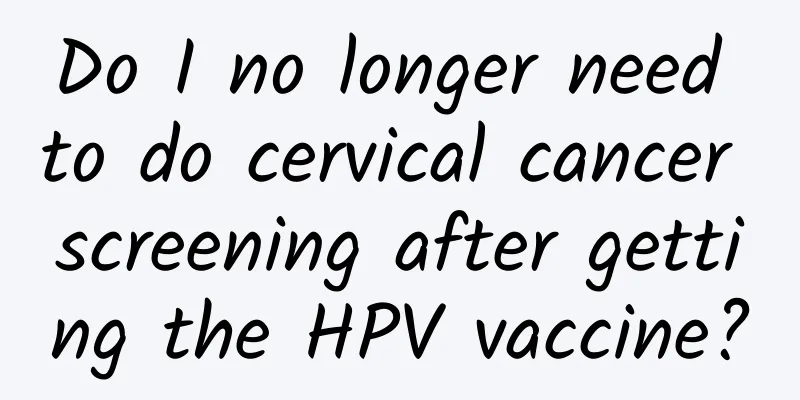Do I no longer need to do cervical cancer screening after getting the HPV vaccine?

|
First, let's learn about cervical cancer. In the female pelvic structure, the bladder is in front and the rectum is in the back. The uterus is between the bladder and the rectum, located in the middle of the pelvic cavity. The uterus is inverted pear-shaped, and the cervix is the gateway to the uterus, located at the lower end of the uterus. Malignant tumors that occur in the cervical epithelium are cervical cancer. Cervical cancer is one of the most common malignant tumors in women, with more than 500,000 new cases worldwide each year, and nearly half of the cases result in death. Despite the seriousness of the disease, it is currently the only cancer with a clear cause and the only one that can be completely prevented and treated through vaccination, screening, early detection, and thorough prevention. The two most important things to prevent cervical cancer are screening and vaccination. Among them, screening is the top priority, and even women who have been vaccinated should have regular checkups according to their own conditions. 1. Why do we need cervical cancer screening? Through early screening, early diagnosis and early treatment, cervical precancerous lesions can be diagnosed and treated in a timely manner, reducing the incidence of cervical cancer. At the same time, cervical cancer can be diagnosed at an earlier stage, which improves the cure rate and survival rate of cervical cancer. For women of childbearing age who wish to have children, improving cervical cancer screening will help detect cervical diseases early before pregnancy, allowing for early treatment intervention and avoiding symptoms such as abnormal vaginal bleeding after pregnancy. Currently, HPV testing and TCT testing are the most common cervical cancer screening tests. 2. Who needs cervical cancer screening? 1. Women aged 21 to 65 who have sexual activity or have had sexual activity for more than three years; 2. High-risk women, including those with multiple sexual partners, those who have early sexual life, those infected with HIV/HPV, those with low immune function, those with poor hygiene/lack of sexual health knowledge, and those with a history of cervical lesions; 3. Both vaccinated and unvaccinated people should still undergo cervical cancer screening according to the guidelines. 3. Is it true that I don’t need to undergo cervical cancer screening after getting the HPV vaccine? No! After vaccination, cervical cancer screening is also essential! Getting the HPV vaccine can reduce the risk of cervical cancer, but it cannot completely prevent cervical cancer. HPV is a large family with many types, and HPV vaccines do not cover all viruses. The current bivalent and quadrivalent vaccines target HPV16 and 18 types, and can only prevent about 70% to 80% of cervical cancer. The nine-valent vaccine can only prevent about 90% of cervical cancer. And the vaccine's protective effect on older women is lower than that on younger women. Therefore, HPV vaccination cannot replace cervical cancer screening. We still need to do both measures to provide ourselves with more comprehensive protection. |
>>: Not smoking ≠ not getting lung cancer
Recommend
Penguin Intelligence: China's mobile payment and social media usage survey
199IT original compilation According to Tencent d...
Should I buy a car during the epidemic or later? How about buying a car during the epidemic?
We all know that due to the impact of the new cor...
What is the reason for non-menstrual leucorrhea with blood
We all know that during menstruation, there is us...
How can women quit smoking?
With the high incidence of female infertility and...
Coagulation and fetal arrest
Pregnancy is a time of surprise and pain. There a...
Introduction to the early reaction of ectopic pregnancy
In recent years, we have found that the incidence...
Is it normal to have ovulation bleeding for several months?
Many women will find a strange phenomenon, that i...
My breasts are soft but I can squeeze out milk. Does this mean I don't have enough milk?
Modern women pay great attention to breast health...
How to postpone menstruation
Sometimes women may have to pay attention to thei...
Can a 4K TV be used as a monitor? What does the 4K TV broadband requirement mean?
4K technology is an ultra-high-definition display...
Should I wear underwear during confinement?
When a woman is pregnant, her breasts will become...
What should you pay attention to during the eighth month of pregnancy?
Pregnant women should increase their intake of va...
Can I eat beef during menstruation?
Beef is a relatively tender and delicious meat, a...
Can I do manicure while menstruating?
Women all love beauty very much, especially their...









